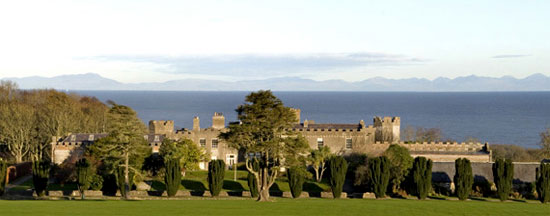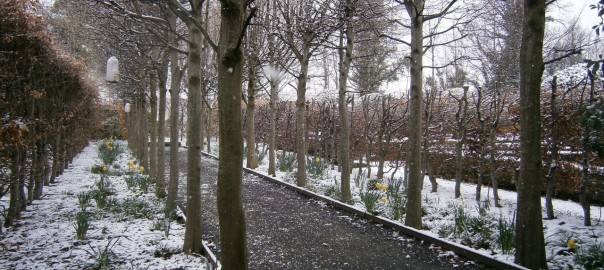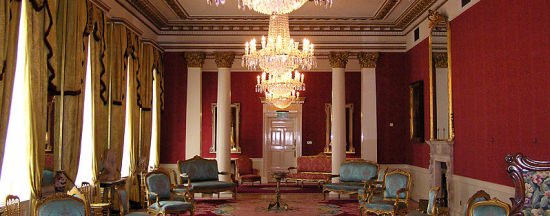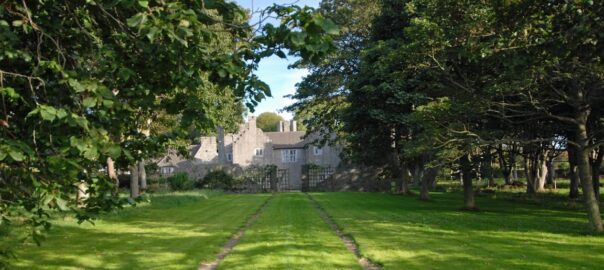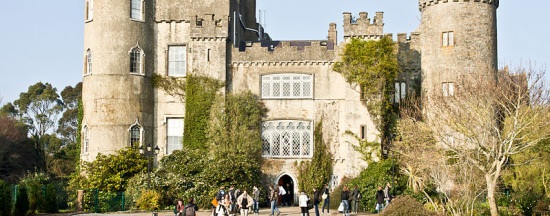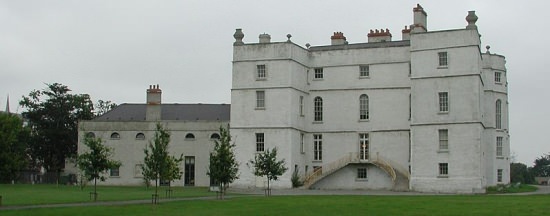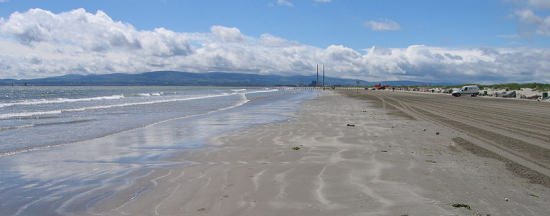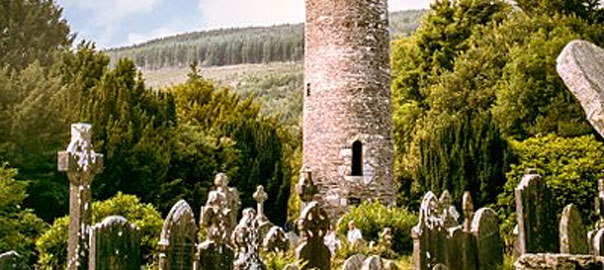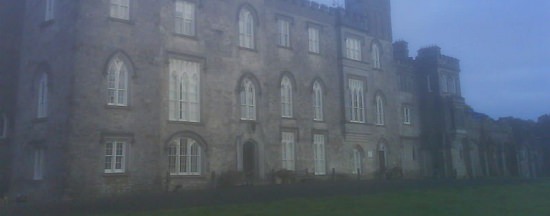Dunsany Castle is situated in the townland of Dunsany, between Trim and Dunshaughlin. The Castle was established as a towered fortification of the Norman Pale in the period 1180 – 1200; construction is believed to have begun in 1180/1181. The Castle was built for a key Norman warlord, Hugh de Lacy, whose chief seat was at Trim. Parts of the original building still stand – the huge foundations and the four main towers form a key part of the current structure. Much additional work has been performed over the years, especially in the 18th and 19th centuries, and the current Castle is more than three times the size of the original.
The Plunkett connection began with the knight Sir Christopher Plunkett (Deputy Governor of Ireland in 1432), who had come into the lands in the area through marriage in the early 1400s. The Castle is the longest occupied home and one of the oldest continuously inhabited buildings in Ireland.
The Castle is entered through a large lobby with a finely worked ceiling, which opens into the central hallway, featuring the principal stairway and a vaulted ceiling. On the ground floor are a fine dining room, featuring portraits of past family members from over the centuries, and a substantial, well-proportioned billiards room while up the stairs are the library and drawing-room. The bright and airy drawing-room has Stapleton plasterwork from 1780.
The unique library, which may have been worked on by James Shiel, is one of the star features of Dunsany. Displaying a form of the “Gothic Revival” style, it has a wonderful “beehive” ceiling from the early 19th century and grained Gothic decoration. There is a fine collection of books from across the centuries, including material by the writer Lord Dunsany and the writing table at which he (and others, such as the poet Francis Ledwidge) worked. Other features include a winding secondary stairway (where a “priest’s hole” formerly existed) and an old vaulted hall, built from the original 12th century kitchen and now displaying part of the Dunsany Home Collection.
As with many land holdings, much of the estate of Dunsany was transferred to tenants under Ireland’s unique Land Acts. The Demesne of the residual Dunsany Estate features farmland, park and woodland, surrounded by a Famine wall (a project to provide work for the destitute during Ireland’s terrible potato famine) with three major entrances.
The current main gateway has the appearance of a Gothic ruin but is a later “sham”, concealing a residential gatehouse; it faces the ancient Dunsany Cross, a pilgrim cross on one of the long-distance walks for the devout. The Castle is fronted by a lawn. At the back of the demesne runs the River Skane, a tributary of the Boyne. Also within the grounds are enclosed yards (farm and stables), a fine walled garden, an ice-house and wells.
The fine Church of St. Nicholas (of Myra), locally known as “the Abbey”, and built on the site of an earlier building, was commenced in the 1440s and holds tombs of family members and local residents. It is a substantial building and the walls still stand solidly, although the roof is long gone. Within are the remnants of lofts and living spaces. There are also some of the best medieval carvings surviving in Ireland, notably on the baptismal font, and a fine carved 15th century tomb (with effigies of a knight and his lady, either the first or second Lord Dunsany and his wife).
The family, headed by the 20th Lord, Edward Plunkett, and his wife, Maria Alice de Marsillac Plunkett, still live at Dunsany. They retain a fine collection of heirlooms, including an enamelled silver mug presented by Elizabeth I and the watch and cross of St. Oliver Plunkett, and some beautiful works of art, notably paintings and porcelain, though for security reasons some are no longer held at the Castle.
The Lonely Planet Guide comments – “A guided tour takes almost two hours and offers a fascinating insight into the family history as well as that of the castle. It remains a family home, and maintenance and restoration are ongoing, so opening hours vary and different rooms are open to visitors at different times – call for details”.
The Castle is the ancestral home of the Lords of Dunsany, heads of the Plunkett family, since the 1400’s. The family still live in the Castle, which holds a private collection of paintings, ceramics and furniture. Dunsany Castle also has a fine demesne, featuring the Abbey (1440). The family has opened the Dunsany Home Collection Boutique in the Castle, which stocks an important collection of unique tableware, linen and other special housewares & gifts, as well as books by Lord Dunsany (1878-1957)
Opening Hours:
Website currently live but very limited.
For castle tours 26th June to 24th August 2025, 10am – 2pm.
Email [email protected] for full tour times and details.
Outside of these dates please make a booking by contacting the email address or calling.
Contact & Pricing:
dunsany.com
[email protected]
Tel: 046 902 5169
Dunsany, Dunshaughlin, Co. Meath
Adults €25; concessions
